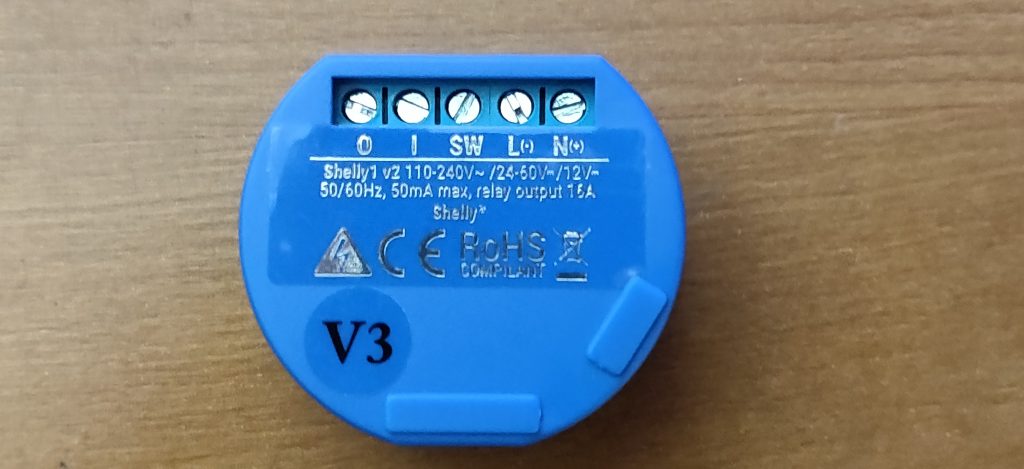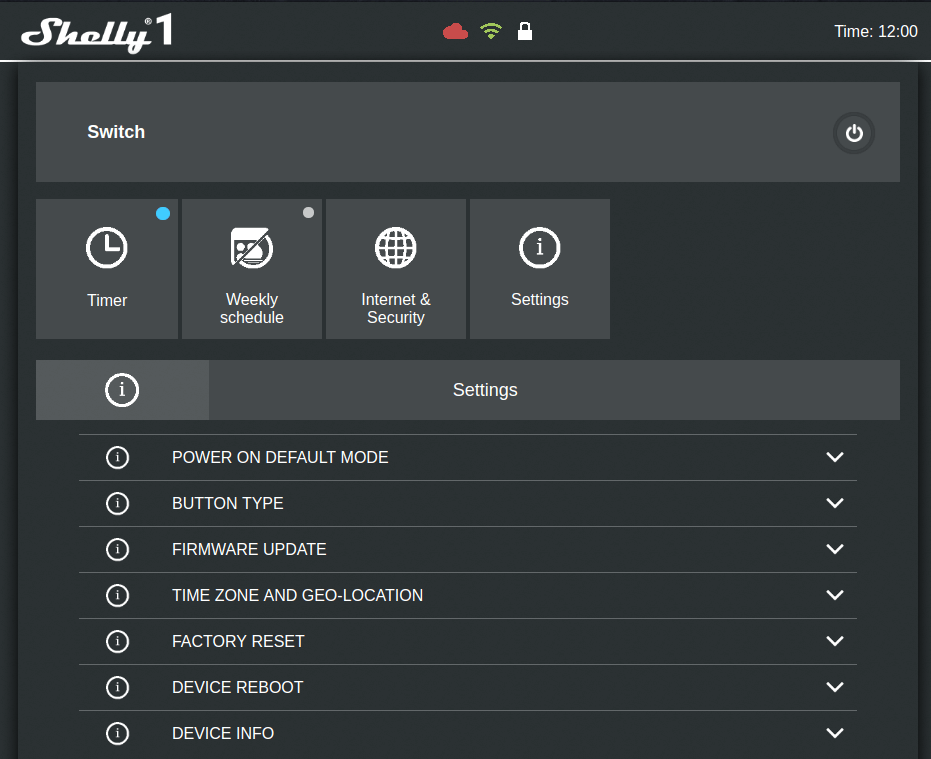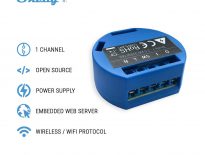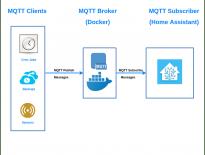Are you looking for a small, inexpensive device to help you turn a light switch or a garage door opener smart? Then the Shelly 1 is what you want.

Table of Contents
What is the Shelly 1?
The Shelly 1 is small form factor WiFi relay. It can use an external voltage (like the voltage from a light switch) to control the relay inside. It runs an internal web server and can be controlled in multiple ways.
The rest of the Shelly 1 specs:
- Supports 802.11 b/g/n (2.4GHz).
- It can draw power from 110-240V AC, 24-60VDC, and 12V DC and has a 16 amp rating
- It can handle a load of up to 3500W
- 41 x36 x 17mm. It’s about the size of an Oreo double stuff cookie.
- Supports mobile app (cloud), Web, REST API, and MQTT control
- It supports custom ROM flashing (like Tasmota)
- It is open source
Editor’s Note: Shelly has released an updated line of Shelly relays, including the Shelly 1 Plus. You can learn more about the Shelly Plus line and how it compares to the original Shelly relays here.
What can the Shelly 1 do?
The Shelly is basically a remote control relay that can control mains voltage switches (e.g. light switches and outlets) as well as low voltage switches (like a garage door or irrigation controller). The WiFi connection and multiple control methods allow for easy integration with switches and garage doors in your smarthome.
The web interface allows for detailed control of the relay. You can set up schedules, timers, and configure security settings (such as allowing cloud access or MQTT). Note if you enable MQTT, you must disable cloud access.
You can also specify what type of button input the relay is receiving (e.g. toggle or momentary) for maximum flexibility of light switch compatibility. Firmware updates, reboots, and default power-on state are all controllable by the web interface.

Integration with smarthomes
REST API and MQTT are extremely useful for integration into smarthome platforms. Most smarthome hubs can easily control the major features of the Shelly 1 using on of these protocols. MQTT support is more limited, only allowing for status and control of the switch’s on/off state. However, this is usually all the control needed.
Another way it easily integrates with other home automation technology is by out-of-the-box support for flashing Tasmota. The GPIO pins are easily accessible. I haven’t found a need for the flashing custom firmware now that this supports MQTT. Integrators already familiar with Tasmota, however, may prefer to flash the firmware as it does provide a more robust feature set.
I currently have the Shelly 1 working as a garage door opener, as a smart gas fireplace switch, and as a light switch. I’ve used MQTT to integrate all of them with Home Assistant and the experience has been seamless. I’ll write up more about how I did it in upcoming articles.

Final Thoughts
The Shelly 1 is a nice smarthome tool to have in your arsenal. It’s small, versatile, and affordable. So far it has been reliable. If you are interested in the Shelly 1 you should also take a look at the other Shelly devices including:
- Shelly 1PM – Like the Shelly 1, but also monitors power use
- The New Shelly 2.5 – A newer version of the 2 with dual relay with power monitoring
- Shelly 4 Pro – 4 relays with power monitoring
- Shelly RGBW2 – Controls LED light strips (Here’s my Shelly RGBW2 review)
- Shelly Flood Sensor – An inexpensive, long-lasting battery-powered flood and temperature sensor.
- The Shelly Dimmer 2 – Here is my review and how-to for the Shelly Dimmer 2.
Editor’s note: Here’s how you can power your entire smart home using Shelly products.
I’ll probably try out some other Shelly products!
This page contains affiliate links. If you purchase an item using an affiliate link I will receive a small commission at no cost to you. Affiliates do not influence my recommendations. Read my disclosures for more information.


